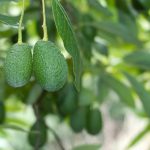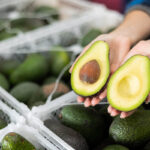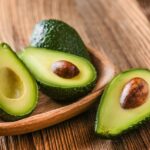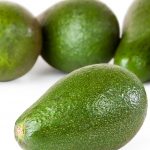Peruvian avocado in the final stretch of the season with low production

“Currently, we have a slightly more optimistic outlook than a few months ago, prices have behaved better, compensating, to some extent, the drop in volume that most producers have experienced.” This is how Juan Carlos Paredes, president of the Association of Producers and Exporters of Hass Avocado of Peru (ProHass), defined the current context of the Peruvian avocado industry.
He explained that in the current season, new producers and exporters have joined and compensated for the drop in production, “so we are reaching the last week of the season with a significant number of containers”.
Paredes said, “We are reaching the end of the campaign with a 12% drop compared to last year; it is an average among all producers, in the case of producers from the coastal regions some of them have had between 25 to 50% less production.”
However, he explained that the drop in production was not so severe thanks to the new exporters having compensated for the fall.
He added that the drop in production was clearly due to climatic factors because they had a hot year, “so the avocado could not accumulate reserves and when flowering and fruit set came, it did not have enough energy to retain the fruit.”
Regarding prices, he said that throughout the year they have behaved stably. He argued that the behavior depends on each producer, as they have different situations, “but in general prices have been between 20 to 30% higher than last year. In the last week, there has been an upward trend because there are no more avocados available in the Southern Hemisphere except for what is left in Peru and Chile, and the restart of the campaign in Colombia and South Africa."
Regarding production, he indicated that the total volume up to August 26 was 22,178 containers, “leaving a balance of only 1,154 to be exported. The volume exported is 510,000 tons”.
Given that the Peruvian avocado industry is in the final stretch, most of the fields are carrying out post-harvest handling. Along these lines, the president of ProHass indicated that the most important thing is to finish the harvest as soon as possible, “because, in the northern part of the country, the buds are clearly defined, with flowers coming for the next season.”
This argument has been key for many producers to cut the campaign, despite the fact that there was fruit that could still compensate for this year's drop: “They have cut the campaign to avoid affecting next year, which means finishing the harvest, applying regulators, pruning and preparing for the next campaign”.
Paredes was emphatic in saying that the climate issue has been the main challenge, given the consequences on production.
Markets
Analyzing the markets, the leader of ProHass explained that Peruvian avocado remains concentrated in Europe, but “despite being our main destination, it would be decreasing this year by 8%, despite taking about 14,000 containers or 305,000 tons.
Regarding the United States, he said that the market has presented a 10% drop to date. “We are with 3,149 containers or 68,000 tons. Then comes Asia, which would be with 2,440 containers or 51,000 tons and that represents a drop of 32% less than last year.”
In the case of Latin America, which includes countries such as Chile and Argentina, the volume comes to 3,274 containers or 69,000 tons, down -6%.
“We shipped to Chile a total of 2,752 containers, representing 58,000 tons, which is a drop of -8%,” he pointed out.
The Asian market for Peruvian avocado is in third place of relevance. For Paredes, the inauguration of the Port of Chacay will improve the commercial conditions of shipments to that destination. “The start of operations in the next season has caused the entire logistics chain to react and many shipping companies are already matching or approaching Puerto Chancay’s conditions in terms of costs and transit time,” he said.
In this sense, he commented that “not only Chancay will allow us to reach China in 21-22 days, but there are also other shipping companies that have activated short routes via Callao. So a very good competitive impulse has been generated, and the only beneficiaries are the exporters.”
Campaign
As we are coming to the end of the avocado campaign, the leader of ProHass said that this year they carried out an action to promote avocado consumption in the country, mainly in wholesale markets, and “we hope to maintain this campaign next year and we are also participating in the World Avocado Organization (WAO), with various efforts, since it has not been a financially good year for producers, despite this, we are participating and contributing our bit in these promotional campaigns”.
He explained that they are working to develop the domestic market, which is closely related to the consumption of green avocados. “In Peru, I estimate that we reach 5 to 7 kilos per capita, but of green avocado.”
“It is important that we continue to consider producers in the avocado promotion campaign at the national level and in other consuming countries because it is very likely that next year Peru will have a large production and, as such, consumption must be promoted.”
The president of ProHass said that in the 2024 and 2025 seasons, they will maintain second place in avocado production worldwide and it is expected that next year there will be a rebound in production.
The Global Avocado Summit organized by the Chilean Avocado Committee and Yentzen Group will be held on November 21 at the Casino Monticello event center.














































